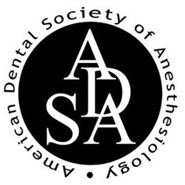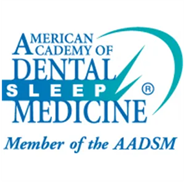How a LANAP Dentist Treats Gum Disease with Advanced Laser Technology

A LANAP dentist uses laser-assisted technology to remove infected gum tissue, support healing, and promote overall oral health. Gum infection, often called gum disease, is a common concern affecting many individuals. If not addressed promptly, it can lead to discomfort, swelling, and even tooth loss. Traditional treatments typically involve surgical procedures requiring longer healing and may cause additional discomfort. With technological advancements, like laser dentistry, we can address the disease with a far less invasive procedure.
Understanding gum disease
Gum disease, also known as periodontal, disease, is a progressive condition affecting the soft tissue surrounding the teeth. Beginning with gingivitis, patients can experience redness, swelling, and bleeding of the gums when brushing their teeth. If left untreated, the condition can advance to periodontitis, where bacteria spread below the gum line, leading to infection, gum recession, and even bone loss. Over time, the supporting structures of the teeth weaken, increasing the risk of tooth loss.
Understanding a LANAP dentist's role in gum disease treatment
According to the Journal of Lasers in Medical Science, LANAP stands for Laser-Assisted New Attachment Procedure. It is an advanced technique a LANAP dentist uses to treat moderate to severe gum disease. The dentist utilizes a specialized laser to target diseased gum tissue while leaving healthy tissue intact. Unlike traditional methods that require cutting and suturing, this laser-based approach is minimally invasive, resulting in a shorter recovery period.
The LANAP treatment process
Before beginning treatment, the LANAP dentist conducts an in-depth evaluation to determine the severity of gum disease. This may include measuring the depth of gum pockets and identifying areas of infection, as the infection can be isolated. Once the assessment is complete, the dentist develops a treatment plan.
As mentioned, the dentist uses a specialized laser to target and remove infected gum tissue during the procedure. The laser energy is designed to eliminate bacteria while preserving as much healthy tissue as possible. This focused approach helps to reduce swelling and bleeding, making the experience more comfortable for patients and smooth for dentists.
After the LANAP dentist removes the diseased tissue, they use the laser to seal the gum pockets, creating a more stable environment for healing. According to the Journal of Lasers in Medical Science, the technology also stimulates the regeneration of bone and soft tissue, promoting long-term periodontal health. Many patients can resume normal activities soon after treatment with minimal discomfort.
Benefits of choosing a LANAP dentist for gum disease treatment
Laser technology offers several advantages when compared to traditional surgical treatments. The precision of the laser allows for the targeted removal of diseased tissue while protecting healthy areas, leading to improved treatment outcomes.
One key benefit of LANAP is a faster healing time. Considering no cutting or suturing is involved in the procedure, recovery is often quicker than conventional gum surgery. The laser also encourages natural healing, helping the gums reattach to the teeth and supporting the regrowth of lost tissue.
LANAP is known for minimizing discomfort during and after the procedure. It reduces swelling and bleeding, making the recovery process less taxing. Since the lasers sterilize the treated area, the risk of infection is also lower. Moreover, patients with certain health conditions who may not be ideal candidates for traditional surgery often find that LANAP is a safer alternative.
Who can benefit from LANAP treatment?
Those with moderate to severe gum disease may be good candidates for LANAP treatment. Along with the aforementioned signs, patients may experience chronic bad breath, gum tenderness, or loose teeth. All signs warrant a trip to the LANAP dentist so that they may determine if laser treatment is the most effective option.
Further, for those hesitant about seeking gum disease treatment due to pain or long recovery periods concerns, LANAP offers a gentler alternative. The minimally invasive nature of this procedure makes it suitable for effective results with reduced downtime.
Post-treatment care and long-term maintenance
While this treatment is an excellent alternative to traditional options, maintaining good oral hygiene following LANAP treatment is essential for long-term success. Regular brushing, flossing, and professional dental cleanings help prevent bacteria from accumulating and causing further harm. Moreover, attending follow-up appointments with the LANAP dentist to monitor healing progress and adjust care plans when necessary.
Restore your gum health with a Miami LANAP dentist
Gum disease can seriously affect your oral and overall health, but modern advancements in laser technology provide a highly effective treatment option. A LANAP dentist can remove diseased tissue, promote natural healing, and help restore gum health without invasive surgery. For those looking for a precise and less painful approach to treating gum disease, contact our Miami office and schedule a consultation.
Request an appointment here: https://www.feelgooddentistry.com or call Feel Good Dentistry at (305) 230-4484 for an appointment in our Miami office.
Check out what others are saying about our dental services on Yelp: Laser Dentistry in Miami, FL.
Related Posts
Tooth extraction is a common dental procedure that general dentists perform on a regular basis. Although it is a routine and safe method, there are common misconceptions about it that cause unnecessary anxiety and fear. It is normal to feel a little nervous before any medical procedure, but it is equally important not to let…
Tooth extraction is one of the most common procedures in dentistry. This article discusses extraction aftercare guidelines to follow to achieve optimal recovery. Complications after a tooth extraction are rare but possible. The common ones include bleeding, dry sockets, and infection. Post-operative care is important to avoid these complications.The body starts healing immediately after the…
When your general dentist says you need an oral sedative, you might have questions. There are many reasons why you might want or need an oral sedative. You may experience a lot of anxiety, or you may need a procedure that can cause discomfort. General dentists use several different kinds of oral sedatives to help…
When people hear the word tooth extraction, they often think of the potential discomfort it may cause. However, a key goal of tooth extraction is quite the opposite. Here is a closer look at tooth extraction and how it helps reduce dental pain.A dentist does not recommend a tooth extraction unless it is necessary. Their…




